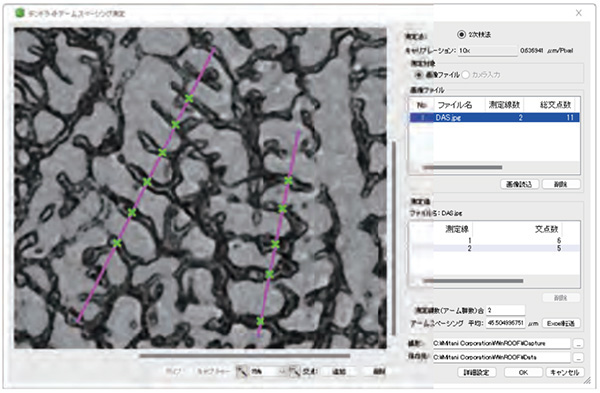
1. What is Dendrite Arm Spacing?
Dendrite arm spacing is a measurement method used to evaluate the microstructure of aluminum alloys.
A dendrite refers to a tree-like crystal structure that forms as metal solidifies.
This structure features a primary arm along the main axis and secondary arms that develop laterally, both observed in a branched pattern.
Measuring the distance between the centers of these arms provides an index of dendrite density and morphology.
This measurement is influenced by factors such as the metal’s solidification rate and cooling speed, as well as the distribution of crystalline precipitates.
Measuring dendrite arm spacing has become increasingly important in recent years as it reveals the quality and mechanical properties of castings.
2. Measurement Method of Dendrite Arm Spacing
1. Like typical metallographic observations, it involves preprocessing and can be performed using microscope images.
The main steps of preprocessing are:
1. Cutting
2. Embedding in resin
3. Polishing
4. Mirror finishing
5. Etching with chemicals
6. Rinsing with water
7. Drying with a dryer
→ For more information on preprocessing for metallographic observations, click here.
The preprocessing steps alone require significant effort and time.
Following the preprocessing steps mentioned above, dendrite arm spacing measurement is conducted using microscope or microscopy images.
There are two methods for measuring dendrite arm spacing:
– Secondary Arm Method
– Line Intercept Method
The Secondary Arm Method involves selecting sections where secondary arms are aligned and calculating the average spacing between them.
The Line Intercept Method is used for structures with low directional alignment, such as granular crystals, where it is difficult to select aligned secondary arms. This method involves drawing straight lines across dendrite arm boundaries and calculating the spacing based on the number of intercepts.
Manual measurement of these operations requires considerable effort and time.
Therefore, we will now introduce an efficient method for measuring dendrite arm spacing using the following software.
3. Efficient Method for Measuring Dendrite Arm Spacing Using Software
We introduce an efficient measurement method using the “Image Analysis Software WinROOF Material Option.”
This software can calculate measurement results using the “Secondary Branch Method” mentioned above.
Our microscope cameras are compatible with the “Image Analysis Software WinROOF Material Option,” allowing for measurements within live images.
(Of course, it is also possible to load multiple pre-captured images.)
Step 1
Open the interface for dendrite arm spacing measurement and load the image.
It is common to perform this measurement across multiple fields of view (images).
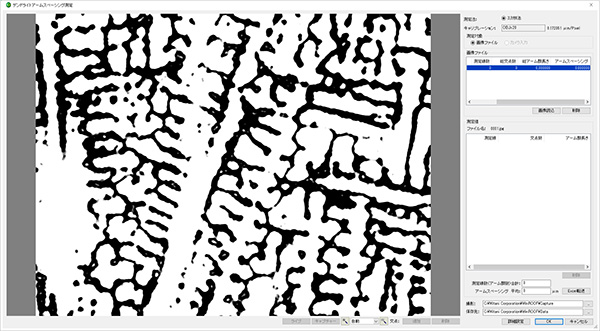
Step 2
On the loaded image, use the mouse to set a “measurement line” (shown in the diagram below, within the yellow frame) at the area where you will measure the arm spacing.
Designate the boundaries of the secondary arms as intersections along the set measurement line.
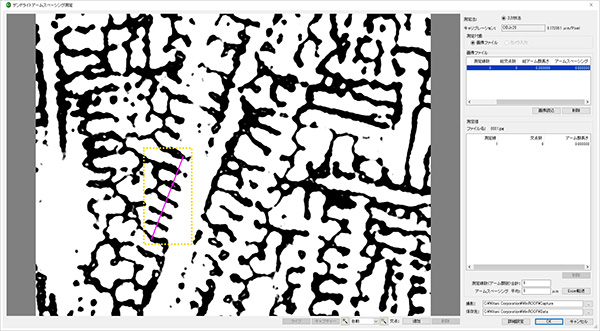
Step 3
Click on the boundary between the measurement line and the secondary arms to add intersections. (Automatic detection feature for intersections available.)
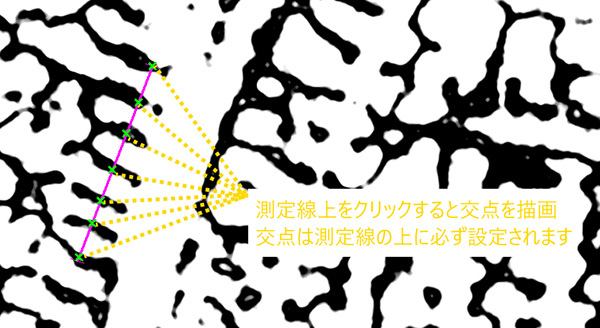
Step 4
Once intersections are specified for one group of arms, repeat the process by setting measurement lines and specifying intersections for other groups of arms within the field of view.
Real-time measurement information is updated on the screen, allowing you to monitor current dendrite arm spacing values. Switch between images (fields of view) to ensure an adequate number of intersection points are specified.
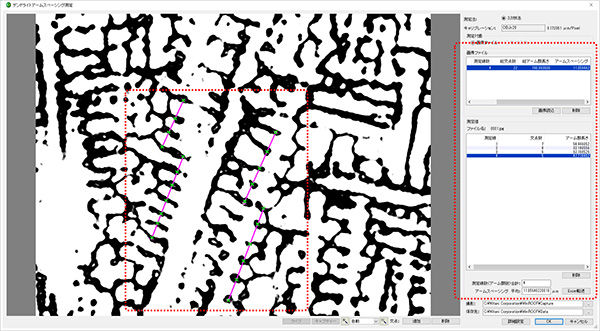

Additional Information
Measurement results can also be exported to Excel for further analysis and documentation.
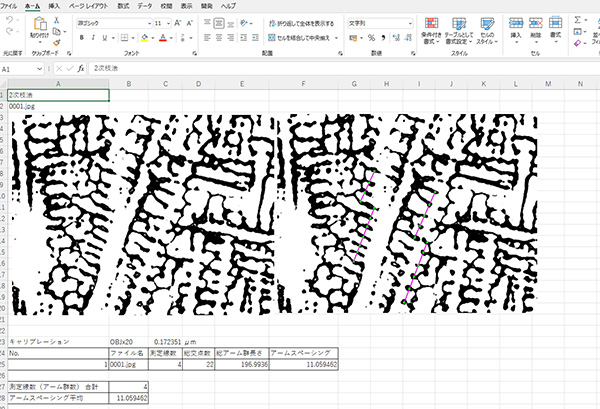
4. Conclusion
Specialized inspections like Dendrite Arm Spacing (DAS) measurement often require skilled personnel to conduct visual inspections over extended periods.
By introducing this software,
– Reduction in inspection time due to alleviated inspection burdens
– Standardization of inspections
– Improvement in the repeatability of inspections
These aspects significantly enhance efficiency. Moreover, the software enables smooth generation of evaluation reports, facilitating streamlined result reporting.



